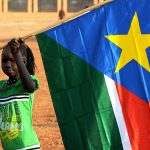The Mauritania flag, first adopted in 1959 and modified to its present form in 2017, serves as a proud emblem of the nation’s identity and cultural heritage. The simplistic yet bold design features a green field with a golden crescent and star at its center, bordered by red bands on the top and bottom.
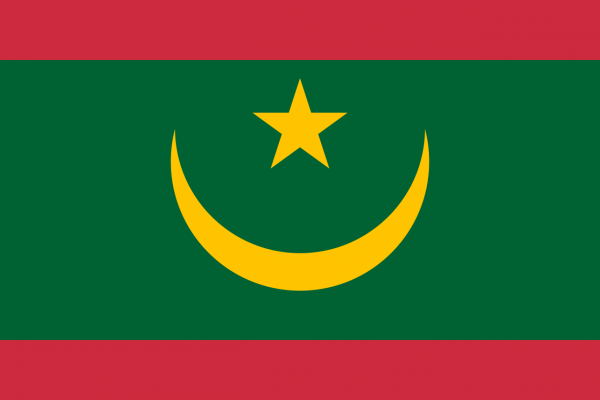
Creating a unifying national symbol for a country with diverse cultures and histories has been a complex task. The current flag, which evolved from the previous design by incorporating the red bands, reflects Mauritania’s commitment to peace, unity, and the values that guide the nation today.
Here’s a closer look at the history of Mauritania’s flag, its symbolism, and the events leading to its modern design.
Table of Contents
What was the Flag of Mauritania before independence?
Mauritania is a large nation located in the Sahel region of West Africa. Much of the county is comprised of the Sahara Desert, with the borders of what is now Mauritania only being drawn in 1904 when France organized the territory.
With the country under French colonial rule from then until independence in 1960, the French tricolour flag was flown from Mauritania’s government buildings. Unlike other European colonialists – notably the UK – France did not introduce separate flags for their possessions. Instead, the French flag was used across all of them.
Being a multicultural and traditionally nomadic society, distinct flags were almost unheard of within and especially across ethnic groups. However, as France agreed to work towards decolonization, and independence approached, a national discussion was sparked on the need for a unified national symbol.
The adoption of the Mauritania Flag today
Mauritania adopted its first national flag, featuring the same green field with a golden crescent and star as on the design today. It was created and introduced by Moktar Ould Daddah, who was also the nation’s first president from 1960 to 1978.
It was unveiled in 1959, on the eve of independence. The design was codified into the constitution simultaneously.
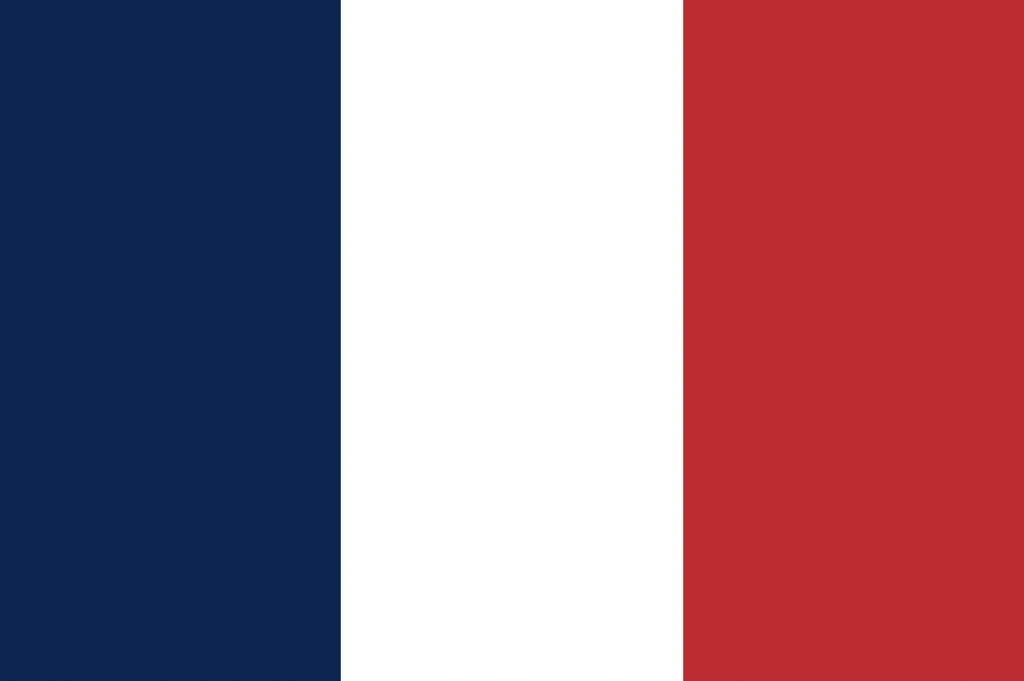
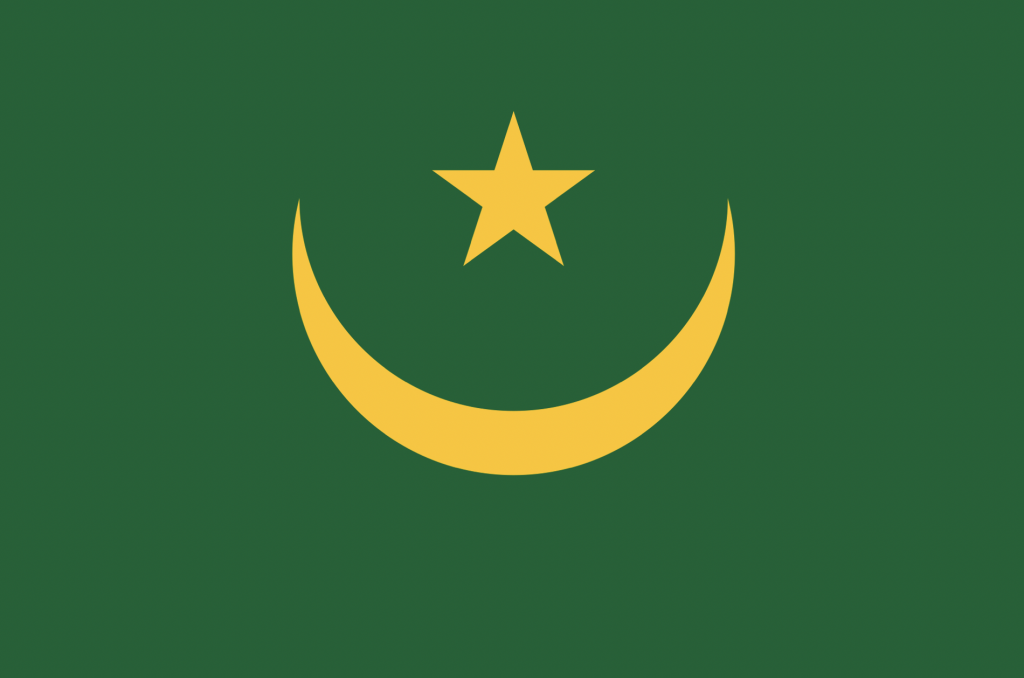
Those with a keen eye for detail, however, will notice that today’s Mauritanian flag is not the same as it was back in 1959.
As a newly independent nation still forming its own identity, Mauritania chose a straightforward flag design. It featured a golden Islamic crescent and star set against a dark green background.
Green is the universal colour of Islam, which 99.9% of Mauritanians adhere to. Neighbouring Libya even had a flag that was just green while under the rule of Muammar Gadaffi.
The country’s Islamic faith is also shown in the crescent and star – a major symbol for Muslims – which is gold for the Sahara. Representing Islam and the Sahara on the national flag, both of which unite virtually the entire country, certainly would have helped build a cohesive Mauritanian identity.
This flag endured for over 50 years until 2017 when a referendum introduced two horizontal red bands. This was intended to honour those who fought for independence from France, with red being the colour of blood. It also meant that the pan-African colours of green, red, and yellow were now represented on the national banner.
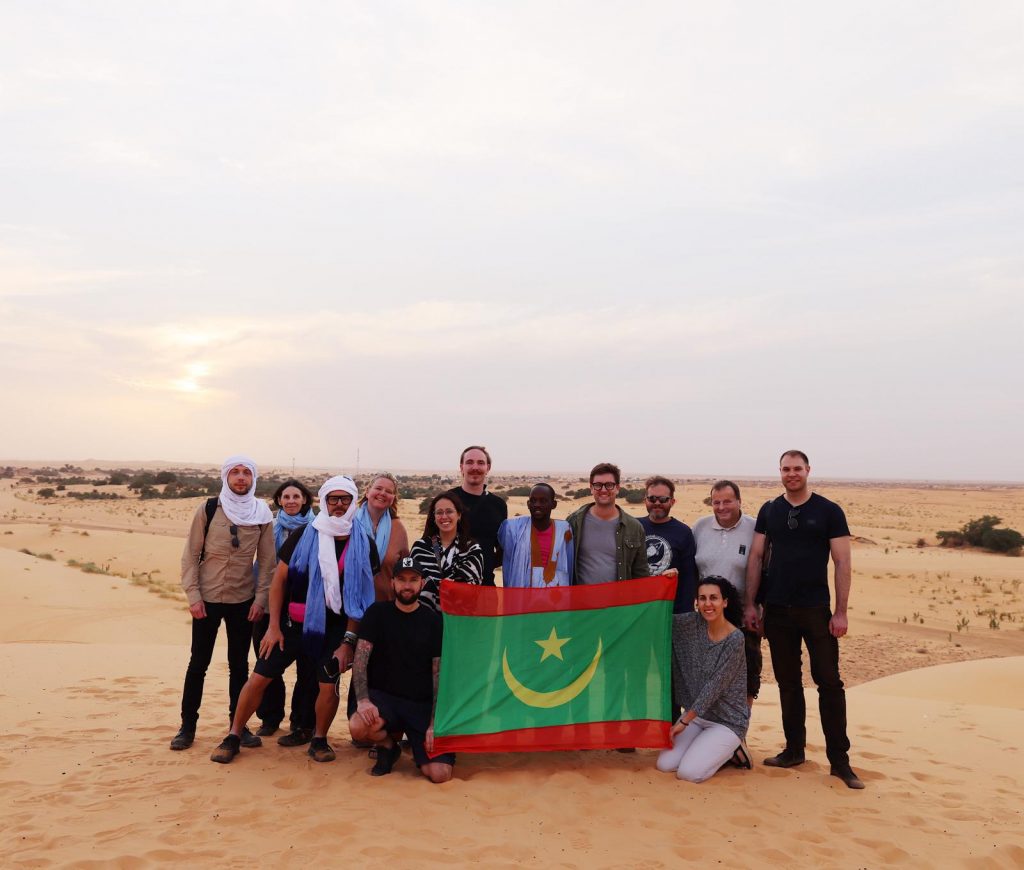
The referendum itself sparked controversy, primarily because it was coupled with a government restructuring that many saw as a step toward democratic backsliding. However, the new design seems to be popular in Mauritania – the modified design can be seen flying throughout the country.
The Symbolism of the Current Mauritanian Flag
The current flag design of Mauritania encapsulates the nation’s history, values and aspirations:
- Green Field: Symbolizes Islam, which is integral to Mauritania’s cultural and social fabric.
- Golden Crescent and Star: Emphasizes the nation’s spiritual alignment, with the crescent and star representing Muslims. The golden colour is for the sands of the Sahara, as well as natural resources such as gold, which are bountiful in Mauritania. wealth in natural resources and its spiritual alignment.
- Red Bands: This is for the resilience and sacrifices of the Mauritanian people throughout their journey to independence, and in sustaining it. It also allows the flag to represent the pan-African colours of green, red, and yellow.
How can I see the flag of Mauritania for myself?
One of our favourite YPT experiences is the Mauritania Iron Ore Train tour, typically running every January. Over a week, we explore the highlights of Mauritania, culminating in an unforgettable night aboard the legendary iron ore train. This journey takes us along the entire length of Mauritania on the world’s longest and heaviest train, where we spend a night under the stars in the vast Sahara!
If you prefer a more personalized journey, we also offer private tours tailored to your interests, whether you’re keen on desert exploration, photography, Islamic culture, or any other interest you may have.
For more information, check out our Mauritania Landing Page, or drop us an email so that we can help plan your adventure!



